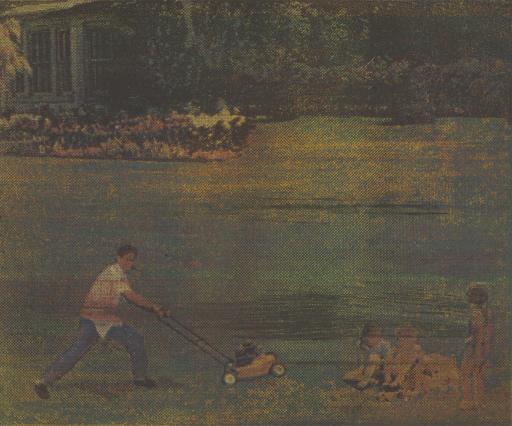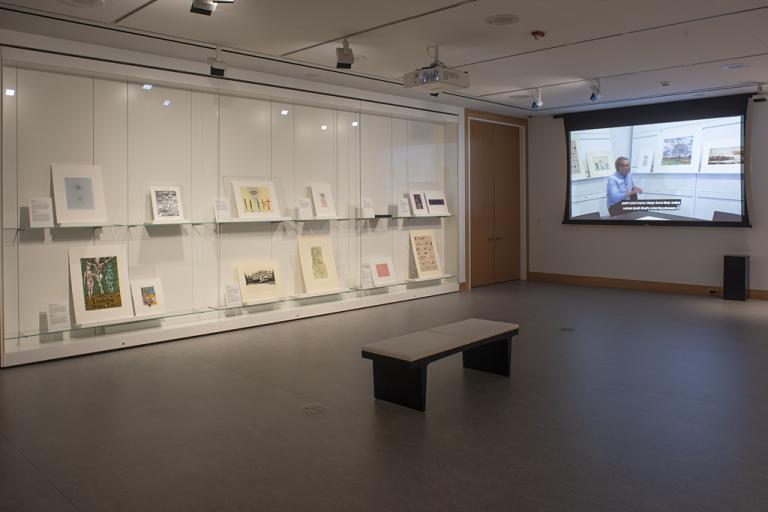Daddy likes the Lawn Neat and Trim, Brian Sailer
Artwork Overview
Brian Sailer, artist
Daddy likes the Lawn Neat and Trim,
1998
Portfolio/Series title: Murder Portfolio
Where object was made: United States
Material/technique: four-color steel etching; sugar-lift; screen print
Dimensions:
Image Dimensions Height/Width (Height x Width): 250 x 302 mm
Sheet/Paper Dimensions (Height x Width): 250 x 302 mm
Sheet/Paper Dimensions (Height x Width): 9 13/16 x 11 7/8 in
Image Dimensions Height/Width (Height x Width): 250 x 302 mm
Sheet/Paper Dimensions (Height x Width): 250 x 302 mm
Sheet/Paper Dimensions (Height x Width): 9 13/16 x 11 7/8 in
Credit line: Gift of the KU Art Department, Intaglio Area
Accession number: 1998.0041.16
Not on display
If you wish to reproduce this image, please submit an image request



